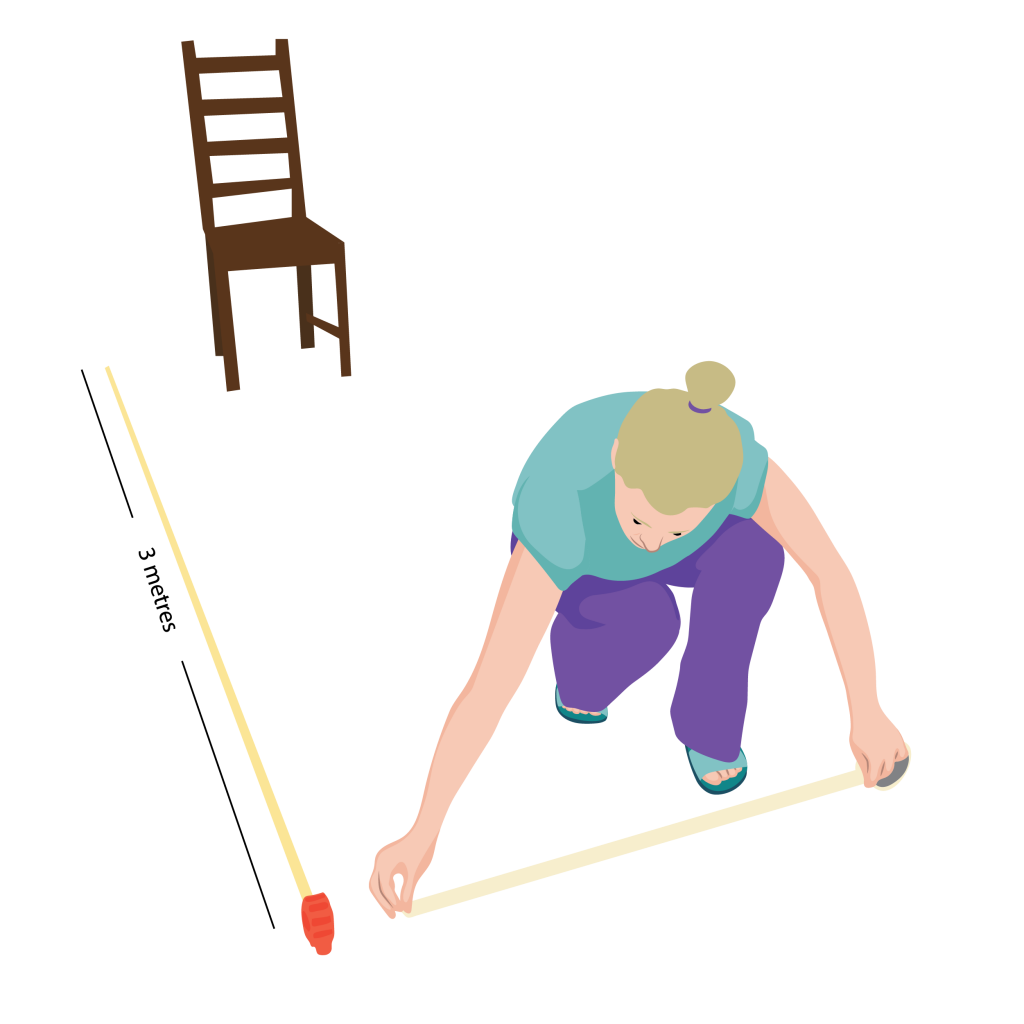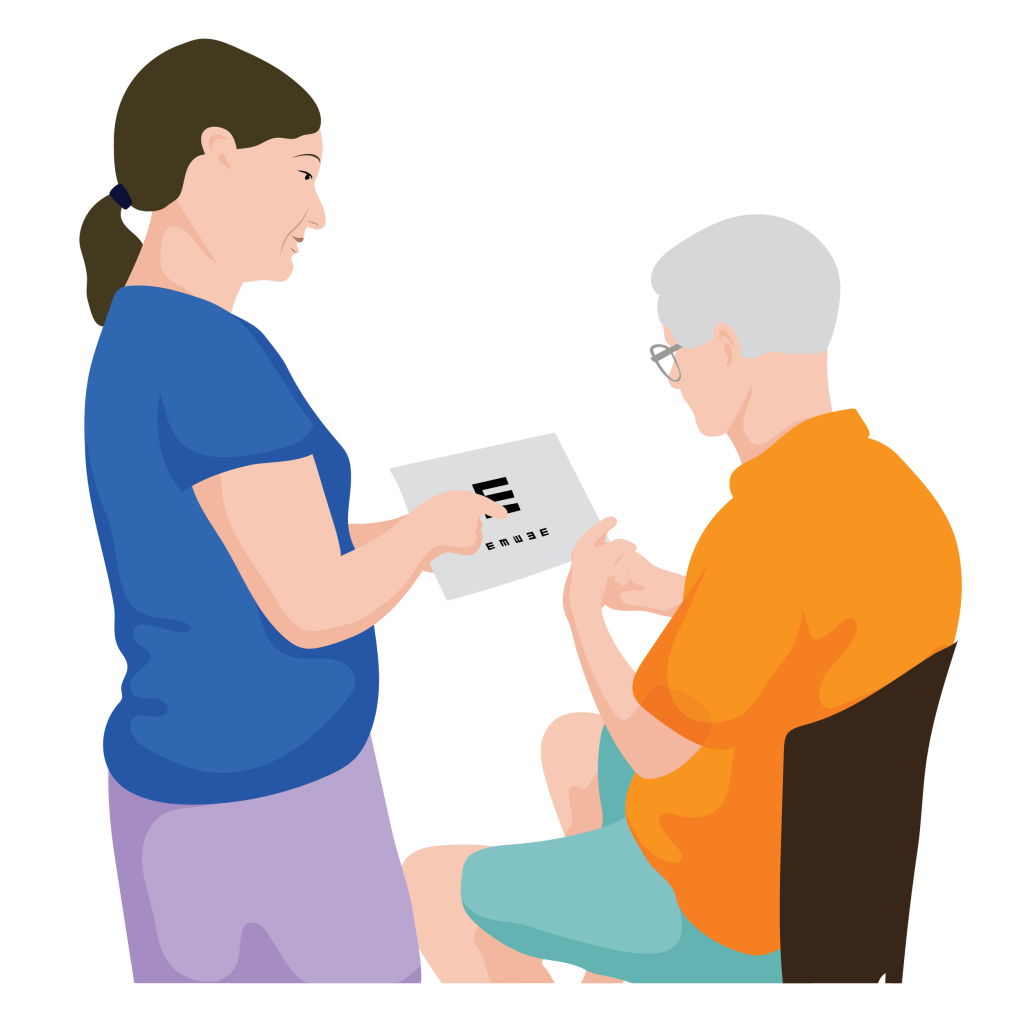There are two simple vision tests that are carried out after the eye health check. These are:
- Simple distance vision test
- Simple near vision test
The TAP vision screen E-Chart
The TAP vision screen E-Chart was developed by LV Prasad Eye Institute in India.
It is to be used only for screening, not for a full vision assessment.
The chart is made up of different sized ‘Es’ facing in different directions.
It can be used to carry out both the simple distance vision test and the simple near vision test.
For each test, people indicate the direction of the ‘open’ end of the E ‘legs’.
If they are correct, it shows that the person can see the E clearly.
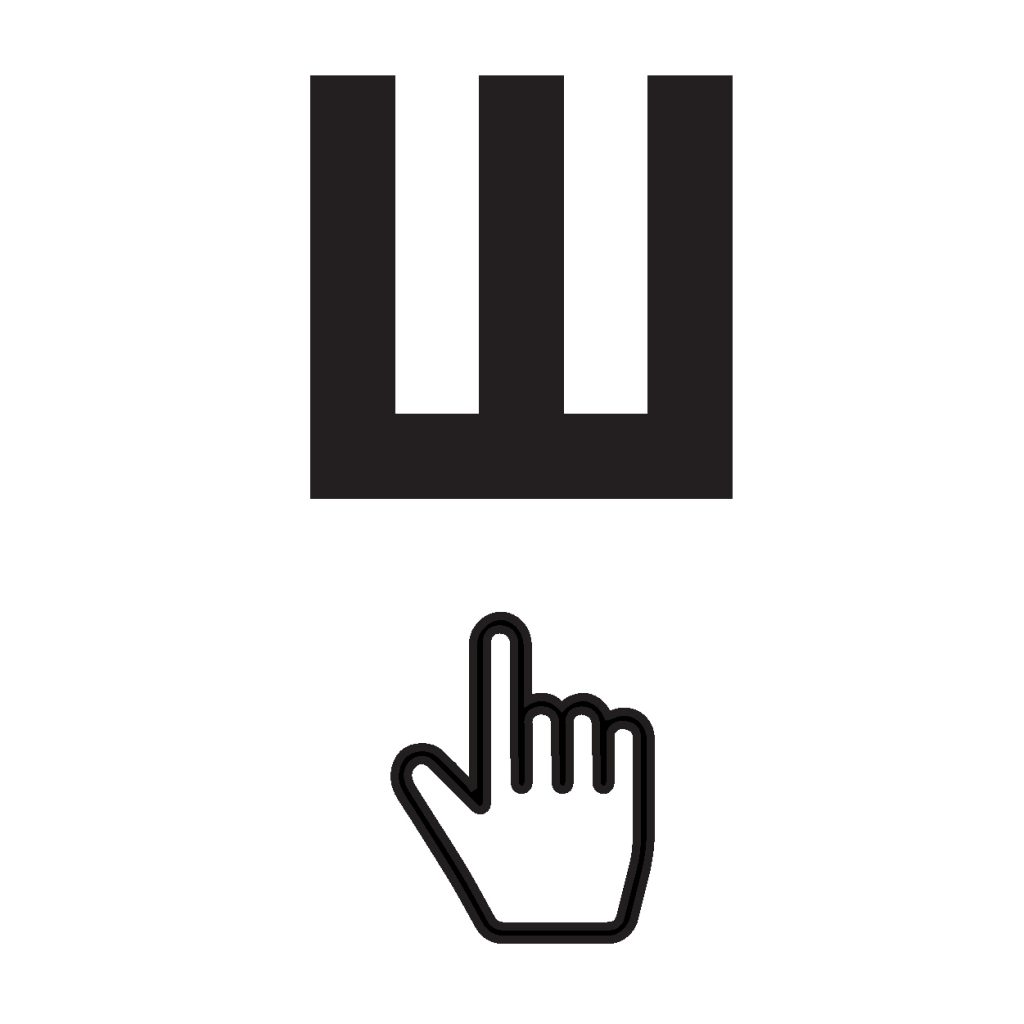
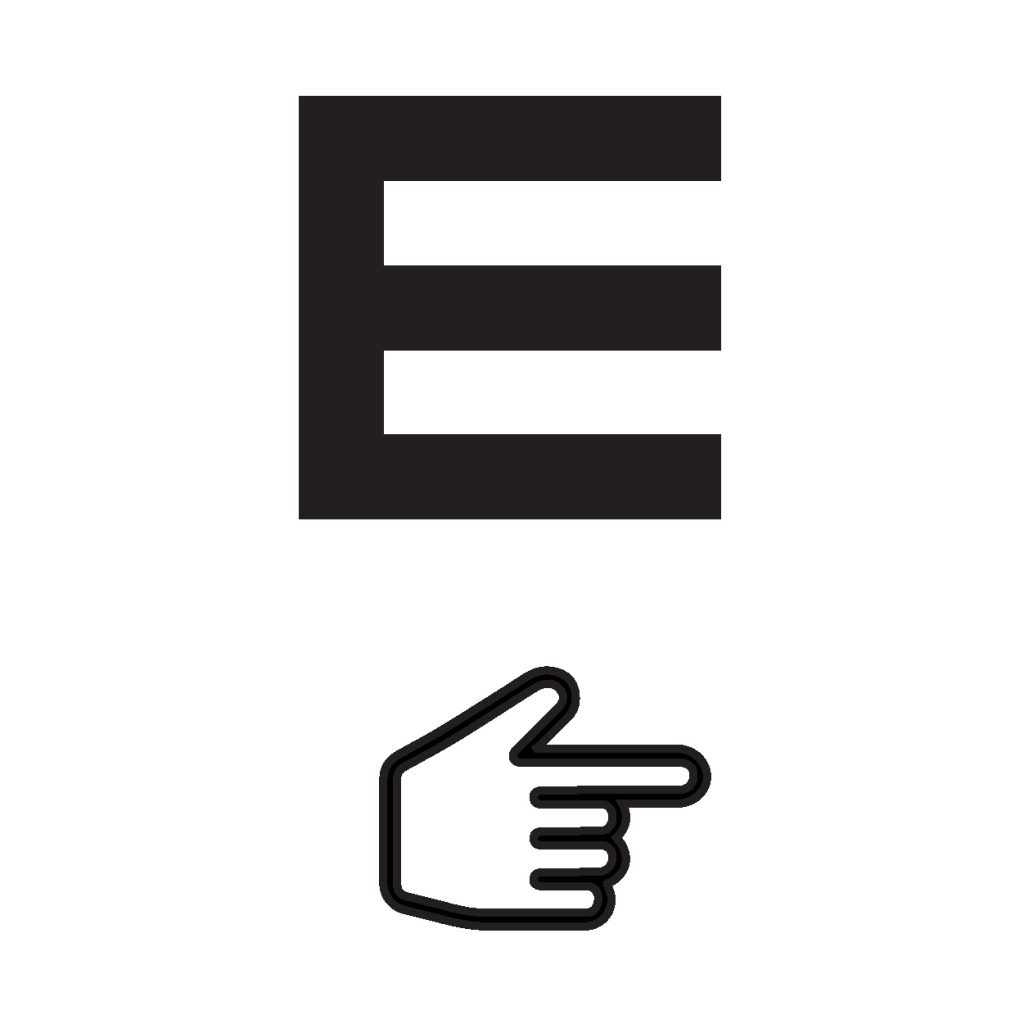
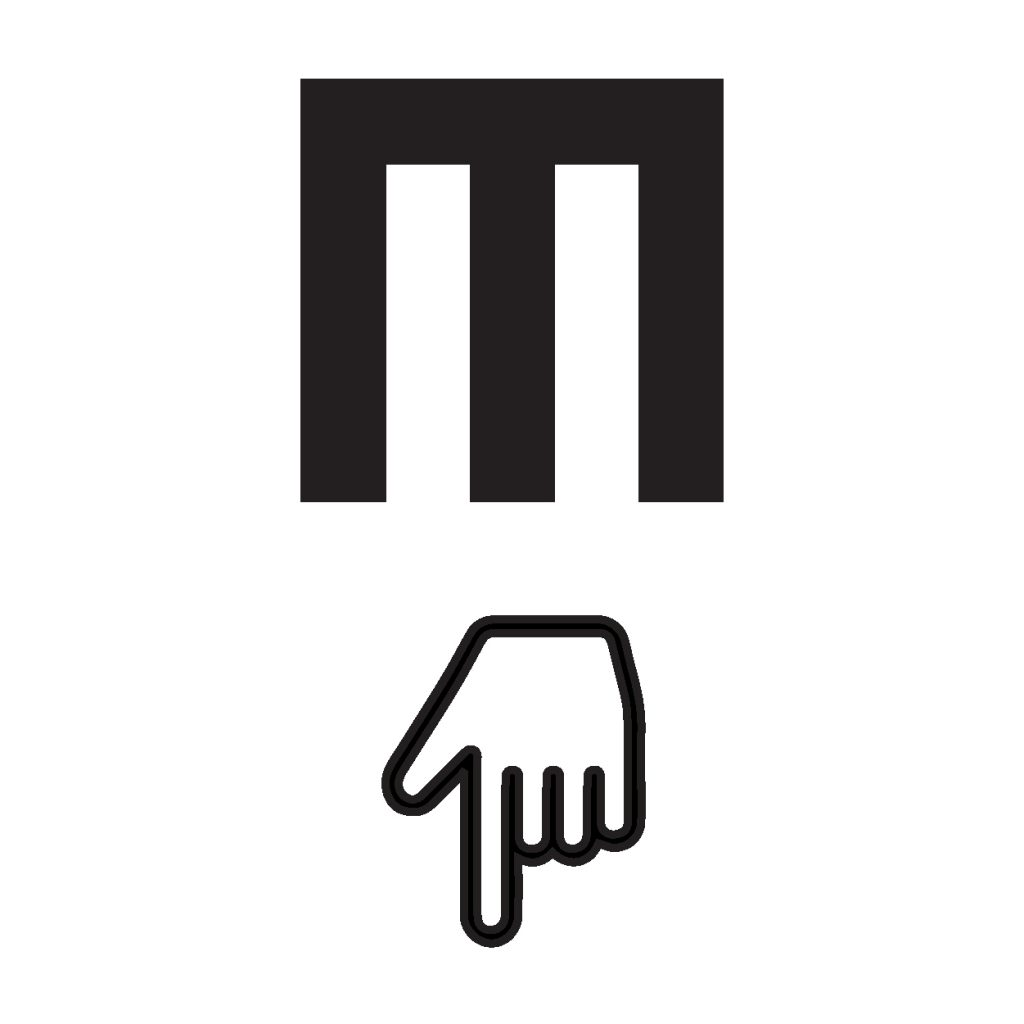
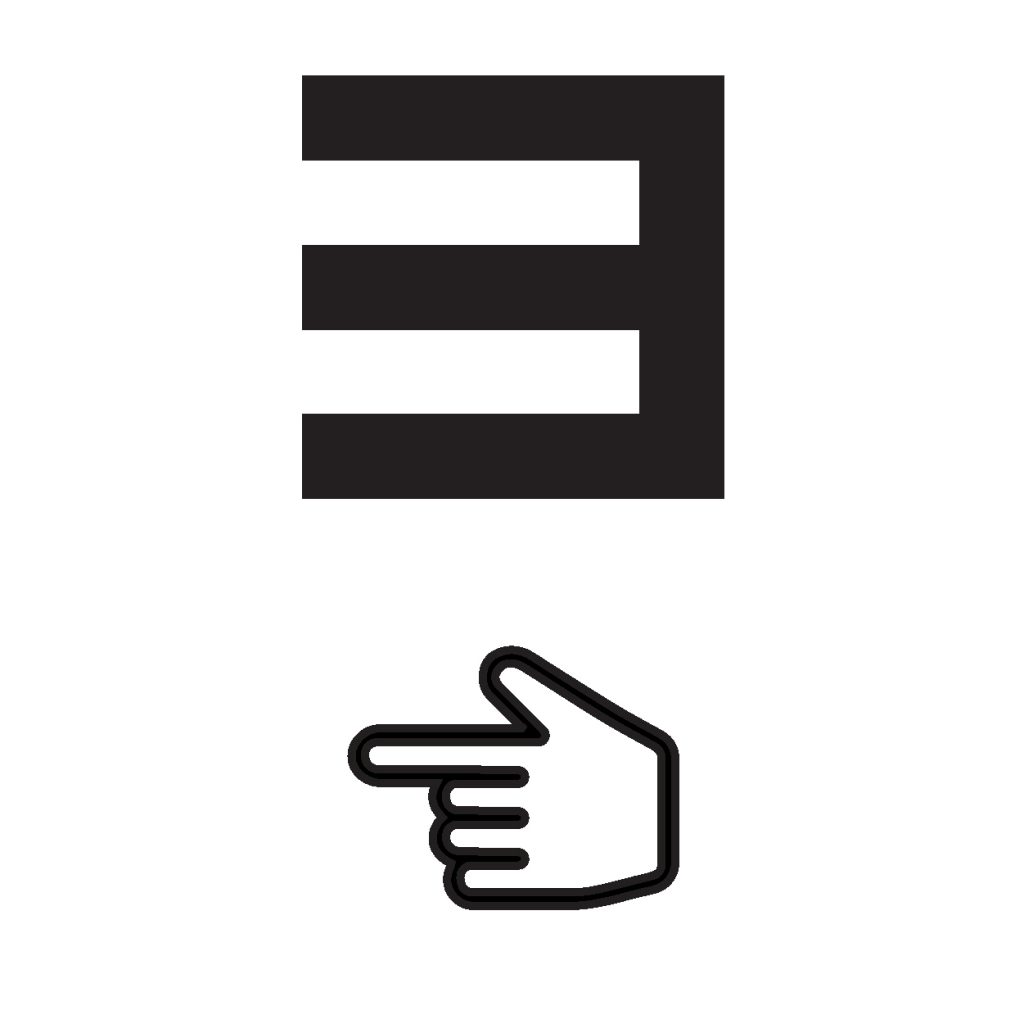
People indicate the direction of the ‘open’ end of the E ‘legs’.
If they are correct, it shows that the person can see the E clearly.
Activity
Look closely at the TAP vision screen E-Chart.
Note the following:
The distance vision Es are at the top. There are three rows:
- One large E (6/60)
- Three medium Es (6/18)
- Five small Es (6/12)
The testing distance for the simple distance test is 3m
The near vision chart is one row of Es at the bottom of the chart.
The numbers next to each row of Es describe the size of the Es.
Prepare the space
The simple distance vision test is done with the person looking at the E-Chart from 3 metres away.
Either:
- Hold the E-Chart in front of you for the person to see OR
- Pin up the E-Chart on a wall.
The person being tested should be seated.
To prepare the space:
- If you will hold the chart – mark on the floor where you are going to stand.
- If the chart is pinned onto a wall – place it at sitting eye level.
- Place a chair so the backrest is 3m away from the chart.
- Mark on the floor where the chair should be so that if it is moved you can easily place it back in the right spot.
If you are doing vision screening in different locations, have a 3m length of string that you can use to quickly mark out the distance.
Prepare the person
Ask the person to sit on the chair and show them the E-Chart.
Explain to them:
- You will use the chart to find out how well they see into the distance and up close (near).
- For the distance test, you will test one eye at a time, by asking them to cover one eye while you test the other.
- During the test you will ask them to look at E’s on the chart.
- For each E you point to, they need to indicate the direction of the “legs” of each “E”. They can do this with their hands, or words.
Practise with them so you know they understand.
Check if the person has glasses
Ask the person if they have glasses that were prescribed for them.
If yes, ask if the glasses are for:
- Seeing in the distance, or
- Seeing up close (near)
If the glasses are for seeing into the distance, they should wear these glasses during the distance vision test.
If the glasses are for seeing up close, they should wear these glasses during the near vision test.
If they are not sure, or if the glasses were not individually prescribed for them, they should not wear them during the test. This could lead to a false test.
Simple distance vision test method
Standing 3 metres away from the person, hold up the E-Chart.
Always test one eye at a time.
1. Test the right (R) eye first.
2. Ask the person to gently cover their left eye with the palm of their hand. Make sure they do not press hard.
3. Point to the large E. Make sure that you do not cover the E with your hand or pointer. Ask the person to indicate the direction of the E legs.
- If the person can indicate the correct direction of the large E legs, test the second row.
- If the person can indicate the correct direction of the E’s on the second row, test the third row.
- If the person can indicate the correct direction of the E’s on the third row, their distance vision is normal.
4. Record on the form the smallest E row (large, medium or small) the person could see.
Repeat for the other eye.
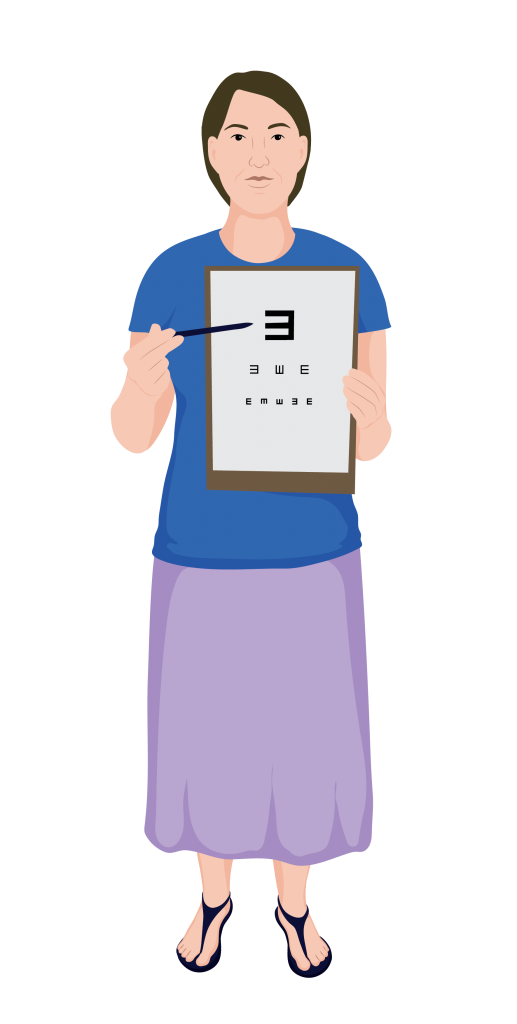
Holding the E-Chart
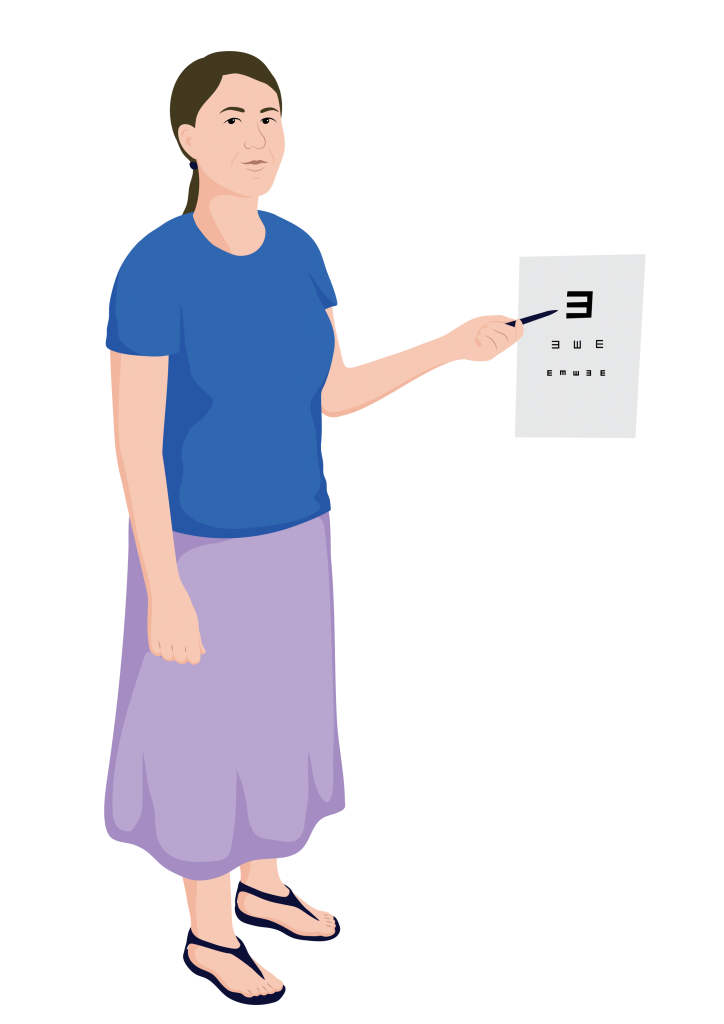
Click on the video to see how to perform the simple distance vision test
Simple near vision test method
Ask the person to hold the E-Chart in front of them. If they cannot hold it easily, you can hold it for them.
The distance between the E-Chart and the person’s eyes should be about 40cm or a distance that is comfortable for them to hold the E-Chart to read.
Test both eyes at the same time (both eyes open).
1. Point to the row of 5 Es at the bottom of the E-Chart (simple near vision test Es). Ask the person to indicate the direction of the legs for each E in the row.
- If the person correctly indicates the direction of the legs at least 4 times, their near vision is likely to be normal.
2. Record the results on the vision screen form.
Click on the video to see how to perform the simple near vision test
